This paper aeroplane launcher is very easy to build and a great simple alternative to a more complex aeroplane launcher. Paper aeroplanes are one of those activities almost everyone has tried at least once and are usually thrown by hand. How well the plane flies depends on the design of the paper aeroplane and the amount of energy the person throwing it uses.
Paper aeroplanes look simple, but there’s a lot of engineering and science involved in getting one to fly well.
Which forces act on a paper aeroplane?
After a paper aeroplane is launched, four forces start to act on it.
Gravity pulls the plane down.
Thrust from the person throwing the plane pushes it forward.
Drag is air pushing back on the plane.
Lift is created when the air under the wing pushes up harder than the air above pushes down. The forward motion of a glider (a paper plane is an example) results from losing altitude.
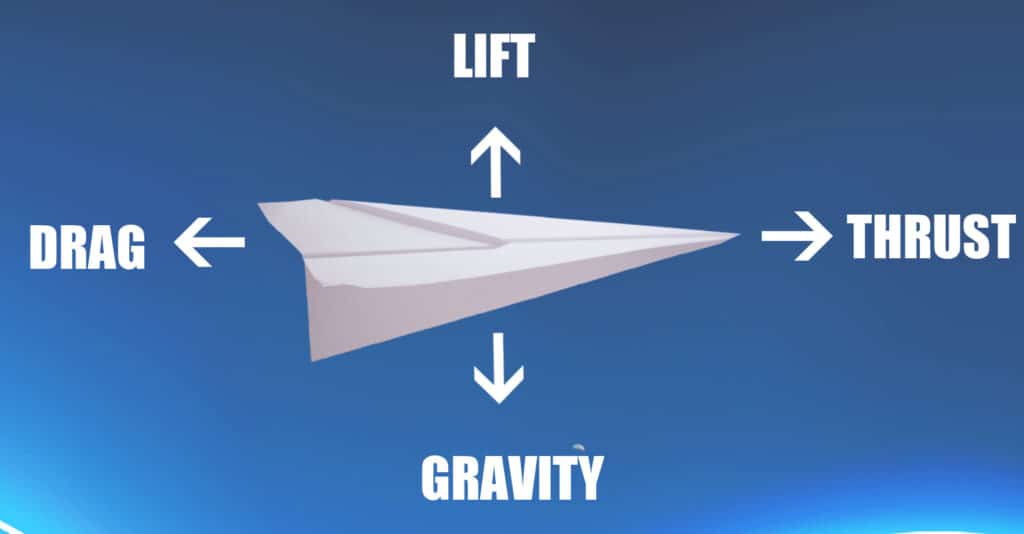
For a paper aeroplane to fly, the combination of lift and thrust must be greater than gravity and drag.
Paper Aeroplane Science Investigation
You’ll need
Elastic band
Stapler
Paper
Card/cardstock
Instructions for a paper plane launcher
Follow the instructions in the video or follow the photos.
Construct a basic paper plane and then build the launcher by folding an A4 sheet of card in half and then half again.
Staple the elastic band slightly off-centre in the middle of the launcher.
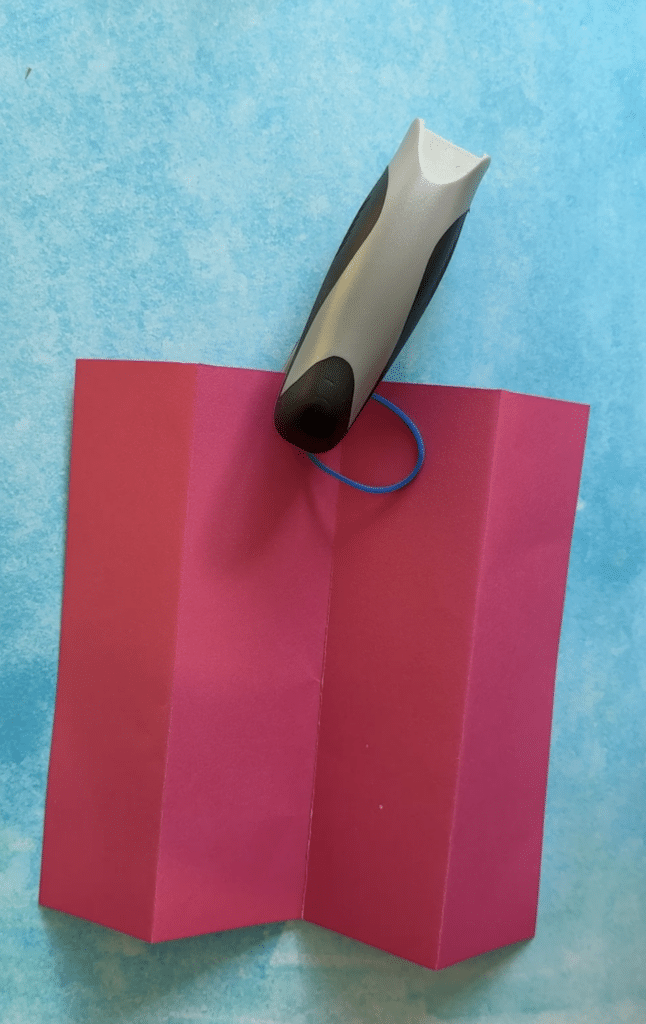
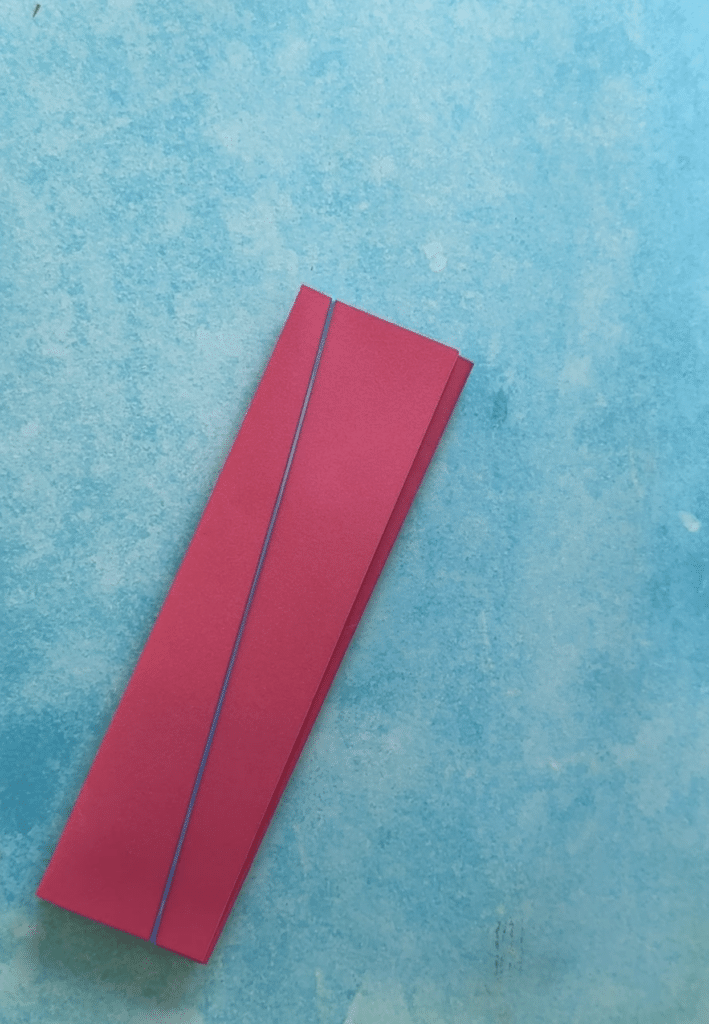
Fold the paper and pull the elastic band to the opposite end of the folded card.
Place the aeroplane inside the launcher with the nose end where the staple is.
To launch the plane, hold the launcher in the air with the plane facing forward and quickly lift up the two ends of the card at the tail end.
The plane should shoot forward.
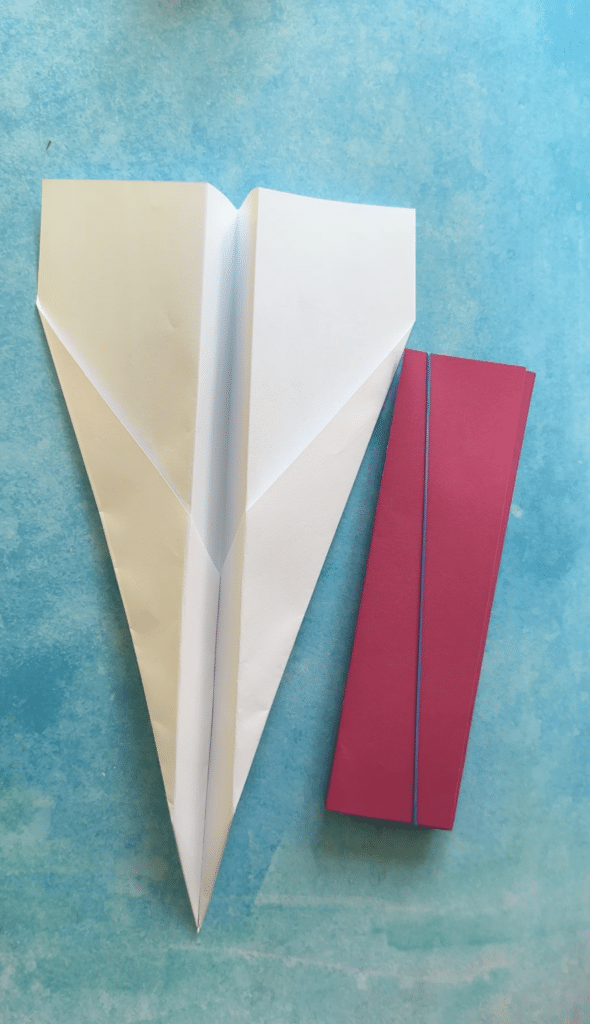
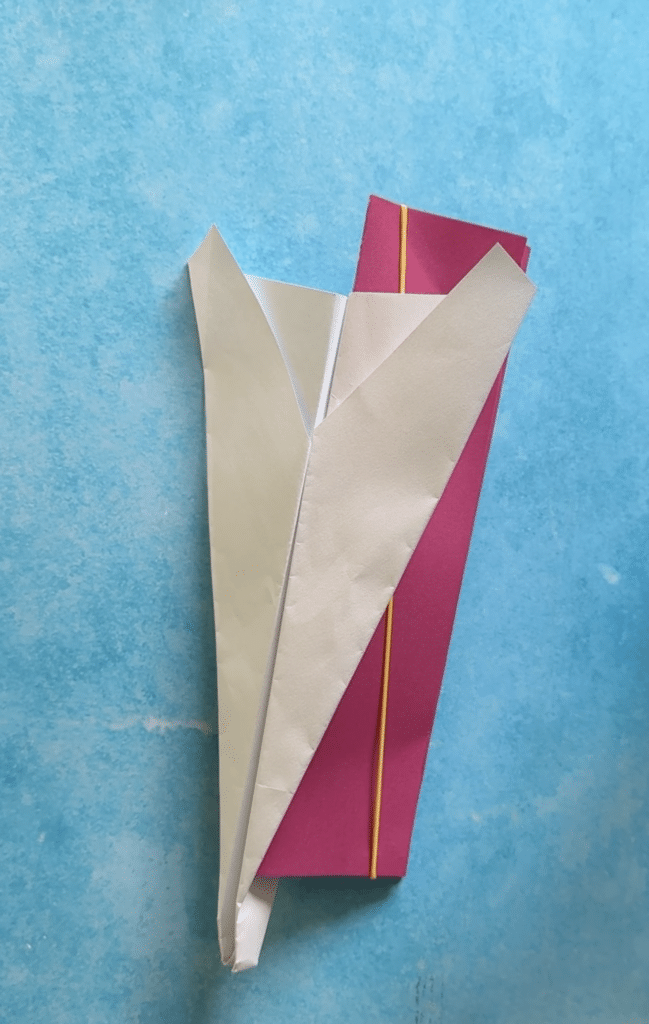
Video Paper Aeroplane Launcher Instructions
Paper Plane Investigation Ideas
Find the average distance the paper plane travels.
Experiment with different sizes and shapes of paper planes.
Compare how well the paper plane launcher works with different thicknesses of elastic bands.
Find out what happens if the front of the plane is made heavier.
Summary
When a paper plane is thrown upwards, it gains kinetic energy from the person throwing it. The kinetic energy is converted to potential energy, and the plane then glides, powered by gravity as it falls. Some energy is lost to air resistance.
When our launcher is used, energy is stored in the stretched elastic band, which is transferred to the plane.
If the plane moves quickly, its wings direct air downwards, generating an equal upward force ( lift ). A paper aeroplane launcher works well as it gives the plane a lot of speed and, therefore, lift to keep it in the air.
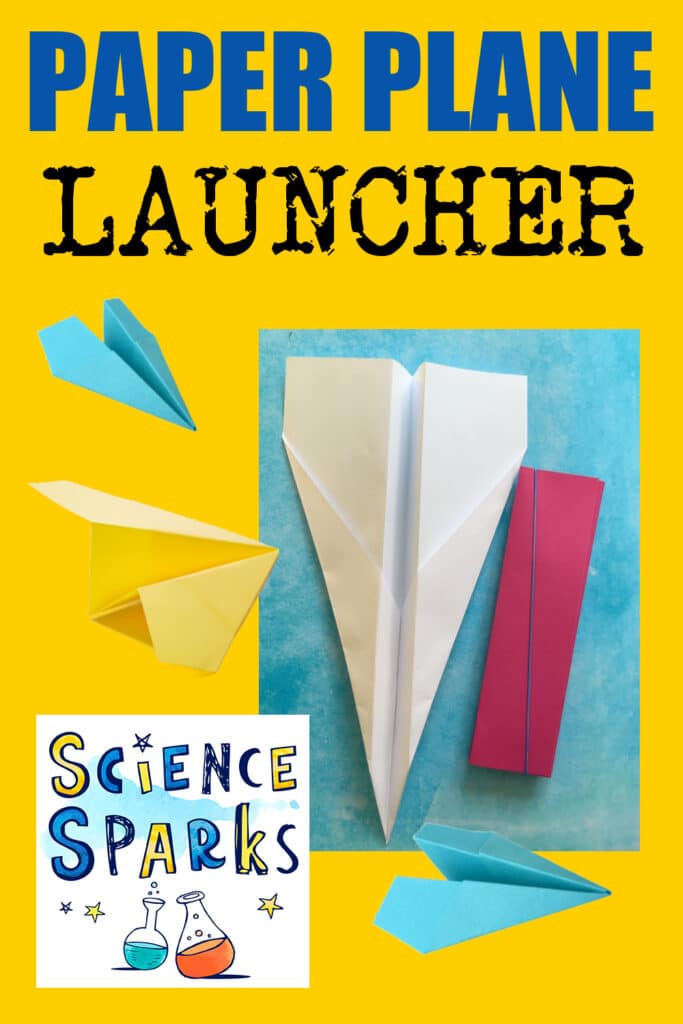
Science Concepts
Engineering
- Physics
- Lift
- Drag
- Thrust
- Air resistance
- Potential energy
- Kinetic energy
Last Updated on April 24, 2024 by Emma Vanstone






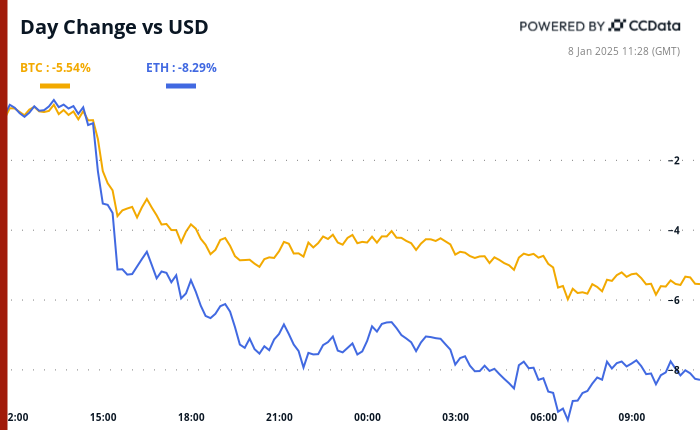


Leave a Comment